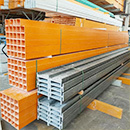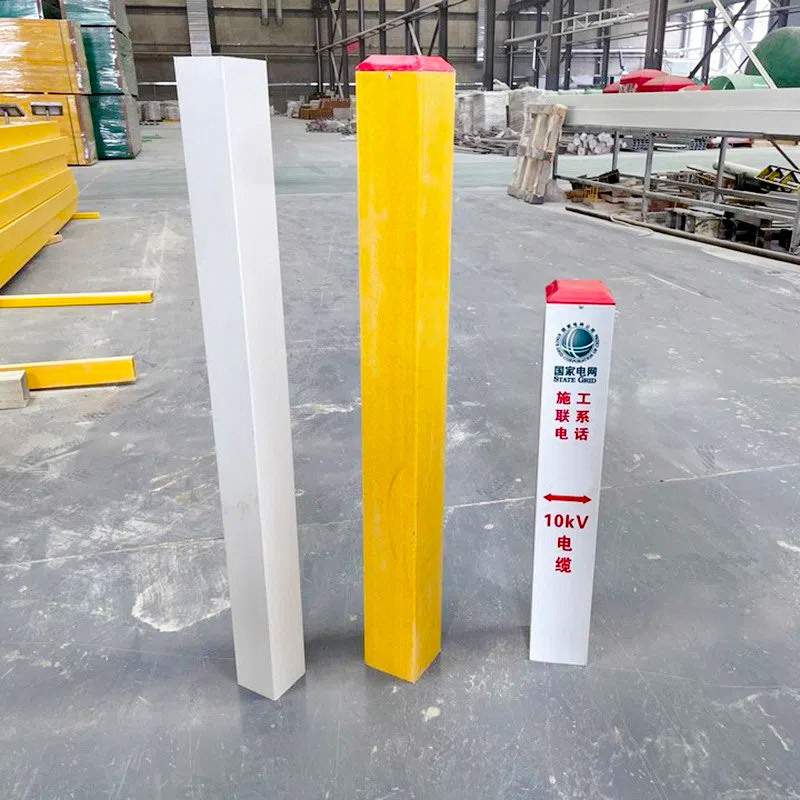The Future of Building Safety: Comprehensive Insights into FRP Composite Handrails
Jul 12,2025
The Future of Building Safety: Comprehensive Insights into FRP Composite Handrails
Table of Contents
1. Introduction to FRP Composite Handrails
2. What Are FRP Composite Handrails?
3. Advantages of FRP Composite Handrails
3.1 Durability and Longevity
3.2 Lightweight Yet Strong
3.3 Corrosion Resistance
3.4 Aesthetic Appeal and Ve

The Future of Building Safety: Comprehensive Insights into FRP Composite Handrails
Table of Contents
- 1. Introduction to FRP Composite Handrails
- 2. What Are FRP Composite Handrails?
- 3. Advantages of FRP Composite Handrails
- 3.1 Durability and Longevity
- 3.2 Lightweight Yet Strong
- 3.3 Corrosion Resistance
- 3.4 Aesthetic Appeal and Versatility
- 4. Applications of FRP Composite Handrails
- 5. Safety Standards and Regulations
- 6. The Future of Building Safety with FRP
- 7. FRP Handrails in Sustainable Construction
- 8. Frequently Asked Questions (FAQs)
- 9. Conclusion
1. Introduction to FRP Composite Handrails
In today's rapidly evolving construction landscape, **building safety** is paramount. As we seek innovative solutions to enhance structural integrity, **Fiber Reinforced Polymer (FRP)** composite handrails have emerged as a vital component in modern architecture. This article delves deep into the significance of FRP composite handrails, illustrating their advantages, applications, and the role they play in revolutionizing safety standards across various building types.
2. What Are FRP Composite Handrails?
FRP composite handrails are structural components made from a combination of polymer resins reinforced with fibers, typically glass or carbon. This unique composition imparts beneficial properties that make them particularly suited for construction applications. Unlike traditional materials such as wood or metal, FRP handrails are engineered to provide enhanced performance in demanding environments.
The Composition of FRP
The core of FRP composite handrails lies in their **fiber-reinforced structure**. The fibers increase the tensile strength of the resin, resulting in a material that is both lightweight and exceptionally strong. This combination allows for various designs and styles, catering to both aesthetic needs and functional requirements.
3. Advantages of FRP Composite Handrails
FRP composite handrails offer numerous advantages that set them apart from traditional materials.
3.1 Durability and Longevity
One of the most significant benefits of FRP handrails is their durability. These materials are engineered to withstand extreme environmental conditions, ensuring that they do not warp, crack, or degrade over time. This longevity translates to reduced maintenance costs and increased safety for building occupants.
3.2 Lightweight Yet Strong
Despite their strength, FRP composite handrails are remarkably lightweight. This characteristic makes them easier to handle during installation, reducing labor costs and minimizing the risk of injury during transport. Their lightweight nature does not compromise their structural integrity, making them a reliable choice for various applications.
3.3 Corrosion Resistance
FRP handrails are highly resistant to corrosion, making them ideal for use in environments where moisture, chemicals, or salt exposure is prevalent. Unlike metal handrails that may rust over time, FRP maintains its integrity, ensuring long-term safety and reducing the risk of structural failures.
3.4 Aesthetic Appeal and Versatility
The versatility of FRP composite handrails allows for a wide range of designs and finishes. They can be manufactured to mimic the appearance of wood or metal, enabling architects and designers to create visually appealing structures without sacrificing safety. This adaptability makes FRP handrails an excellent choice for both modern and traditional architectural styles.
4. Applications of FRP Composite Handrails
FRP composite handrails are increasingly being utilized in various sectors due to their advantageous properties.
4.1 In Commercial Buildings
In commercial settings, where safety regulations are stringent, FRP handrails provide an excellent solution for staircases, balconies, and walkways. Their durability and low maintenance requirements make them ideal for high-traffic areas.
4.2 In Industrial Environments
Industrial environments often expose handrails to harsh conditions. FRP's corrosion resistance makes it a preferred choice in factories, chemical plants, and similar settings where traditional materials would fail under stress.
4.3 In Residential Homes
Homeowners are increasingly opting for FRP composite handrails in their properties. Their aesthetic appeal, combined with safety features, makes them suitable for decks, patios, and staircases, enhancing the overall design while ensuring secure usage.
5. Safety Standards and Regulations
To ensure that FRP composite handrails meet safety requirements, they must comply with various industry standards. Regulatory bodies have established guidelines that dictate the minimum strength and performance characteristics of handrails in different environments. Understanding these standards is crucial for builders and architects to ensure compliance and safety.
6. The Future of Building Safety with FRP
As the construction industry evolves, the future of building safety will increasingly rely on innovative materials like FRP composite handrails. With advancements in manufacturing processes and material science, we can expect even more efficient and effective applications that redefine safety standards.
7. FRP Handrails in Sustainable Construction
Sustainability is becoming a focal point in construction, and FRP composite handrails align perfectly with this goal. Their long lifecycle and low maintenance needs contribute to reduced environmental impact. Moreover, many FRP materials are recyclable, further enhancing their sustainability credentials.
8. Frequently Asked Questions (FAQs)
What are the key benefits of FRP composite handrails?
FRP composite handrails offer durability, lightweight strength, corrosion resistance, and aesthetic versatility, making them an excellent choice for various applications.
Are FRP handrails more expensive than traditional materials?
While the initial cost may be higher, the long-term savings in maintenance and replacement often make FRP handrails a more economical choice over time.
How do FRP handrails compare to metal handrails?
FRP handrails are lighter, resistant to corrosion, and do not require painting, unlike metal handrails, which can rust and require more maintenance.
Can FRP handrails be customized?
Yes, FRP composite handrails can be customized in various designs, colors, and finishes to meet specific aesthetic and functional needs.
What safety standards do FRP handrails need to meet?
FRP handrails must comply with local building codes and safety regulations, ensuring they meet the necessary performance criteria for strength and safety.
9. Conclusion
In summary, FRP composite handrails represent a significant advancement in the quest for **building safety**. Their unique properties, combined with aesthetic versatility and sustainability, position them as a preferred choice for the future of construction. As we embrace these innovative materials, we can ensure that our buildings not only meet safety standards but also contribute to a sustainable future. Embracing FRP composite handrails is not just a choice; it is a commitment to safer and more resilient structures.
Previous:




